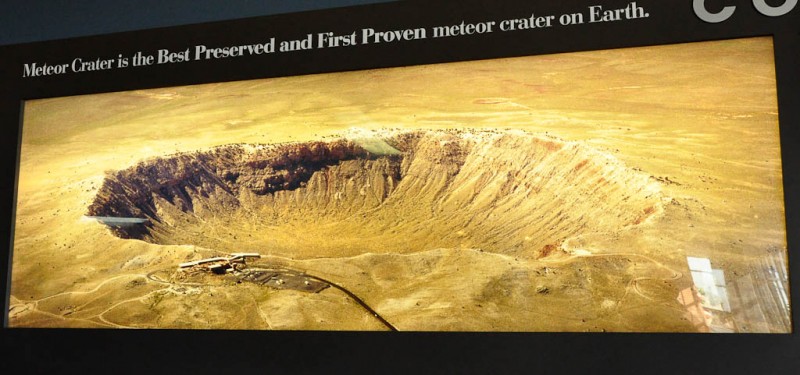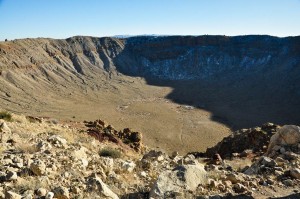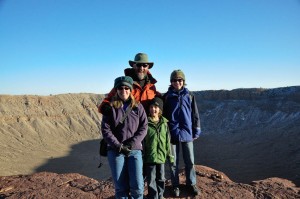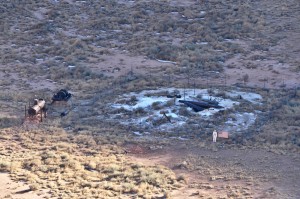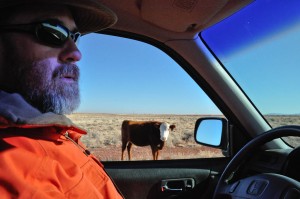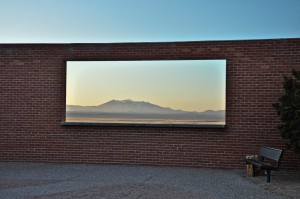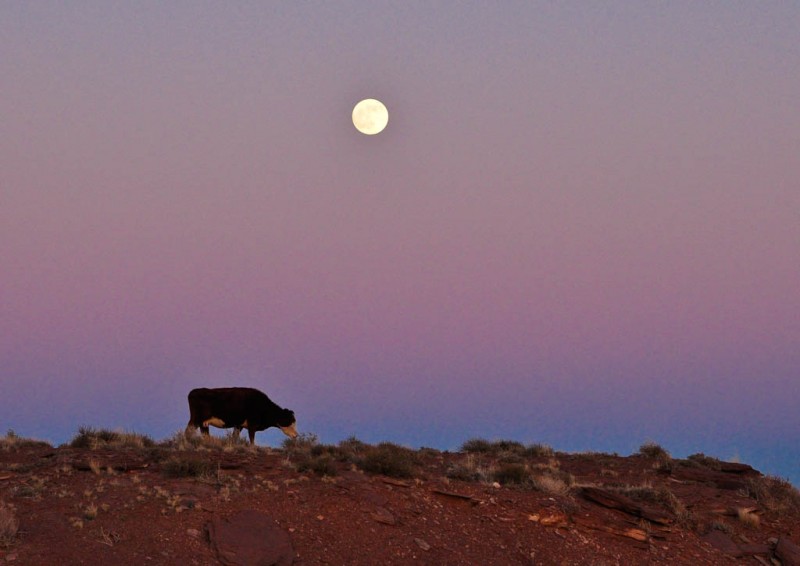What happens when a meteorite 150 feet in diameter slams into the earth at 26,000 miles per hour? You guessed it, it leaves a giant hole in the ground. This one measures 1 mile across and 570 feet deep. What makes this one so special is that even though it was created 50,000 years ago, it has not been eroded by time, covered by water, obscured by vegetation or enveloped by progress. It is still basically the same as it was after the impact.
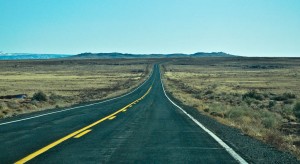 above: The rim of the crater can be seen elevated in the distance.
above: The rim of the crater can be seen elevated in the distance.
The Northeastern part of Arizona is wide open desert which provided the perfect environment needed to preserve the crater. In the 1800’s, the hole was thought to have been the result of volcanic activity. But, in the early 1900’s, it was thought to have been the result of a meteor impact. But, it wasn’t until 1960, when Eugene Shoemaker proved that it was result of a meteor due to the presence of a mineral that could only be produced by an “instantaneous overpressure”. His discovery is considered the “first definitive proof of an extraterrestrial impact on the earth’s surface”.
The museum at the crater has a 1400 pound piece of the iron-nickel meteorite on display. It was one of the few pieces found at the site as the rest was vaporized on impact. The museum also has several interactive displays and historical information about the site including it’s use as a training ground for the Apollo astronauts in the 1960’s.
left: Mining equipment and an “astronaut” can be seen at the bottom of the crater.
right: The Lil’ Dude finds a heart rock at the crater.
Access to the crater is limited to a few observation decks and a short trail that runs along the rim that can only be accessed with a guide. We took the guided tour and learned about the history of the crater, saw remnants of previous mining activities and an Apollo training command module.
 above: Remnants of a house used during mining operations from the early 1900’s.
above: Remnants of a house used during mining operations from the early 1900’s.
The site is privately owned and sits in the middle of a huge ranch. Cows on the ranch gave us the “stink-eye” as we drove the road to and from the crater which added an interesting aspect to the tour.
right: A “window” in the courtyard of the museum shows the mountains in the distance.
If you’re one of those people who is into anything about “space” or “space objects”, it makes for an interesting and informative afternoon and one couldn’t find a better example of a meteor crater. For those of you not into “space stuff”, it really is just a big hole in the ground.
“I would rather be a superb meteor, every atom of me in magnificent glow, than a sleepy and permanent planet.” Jack London
bla


